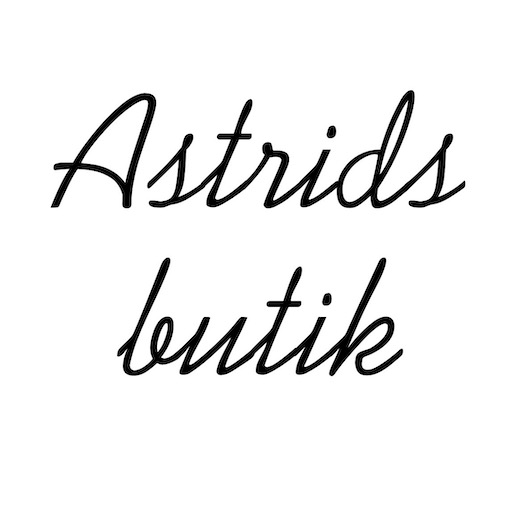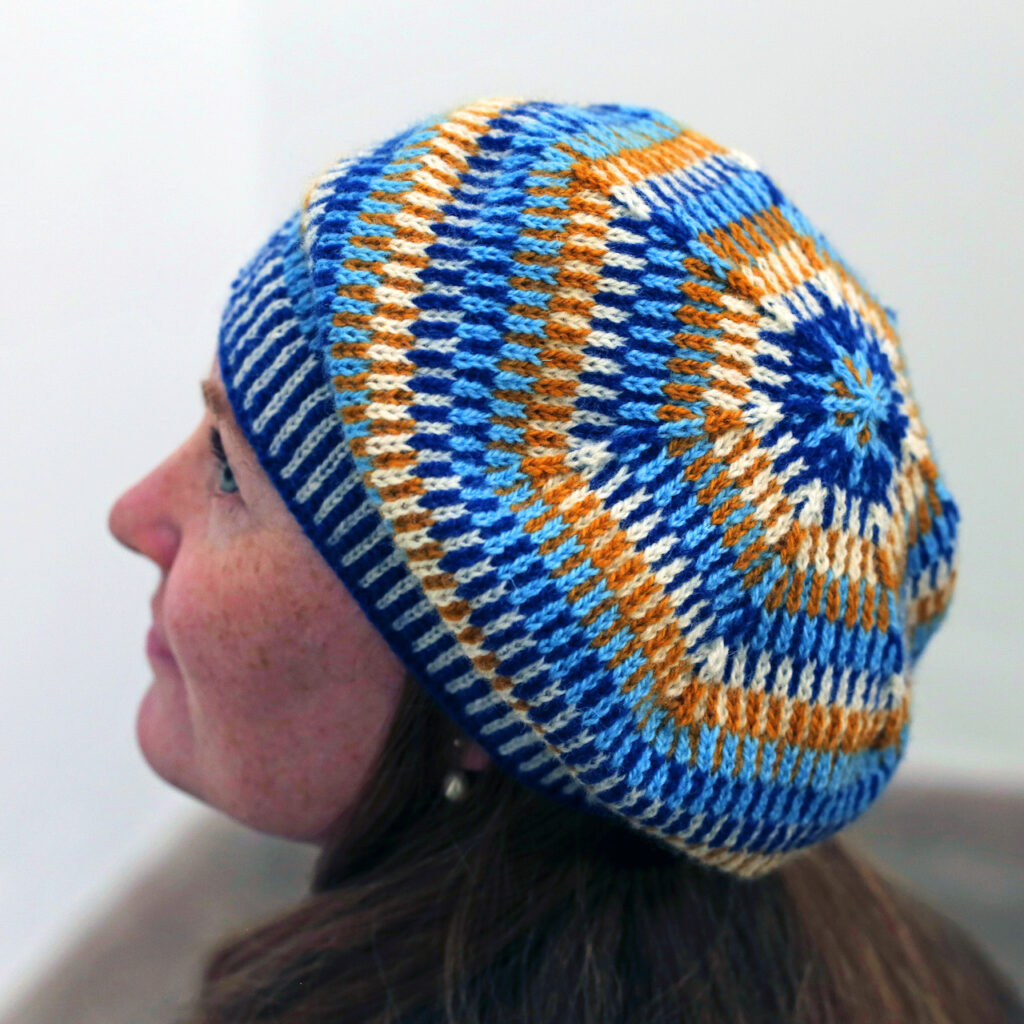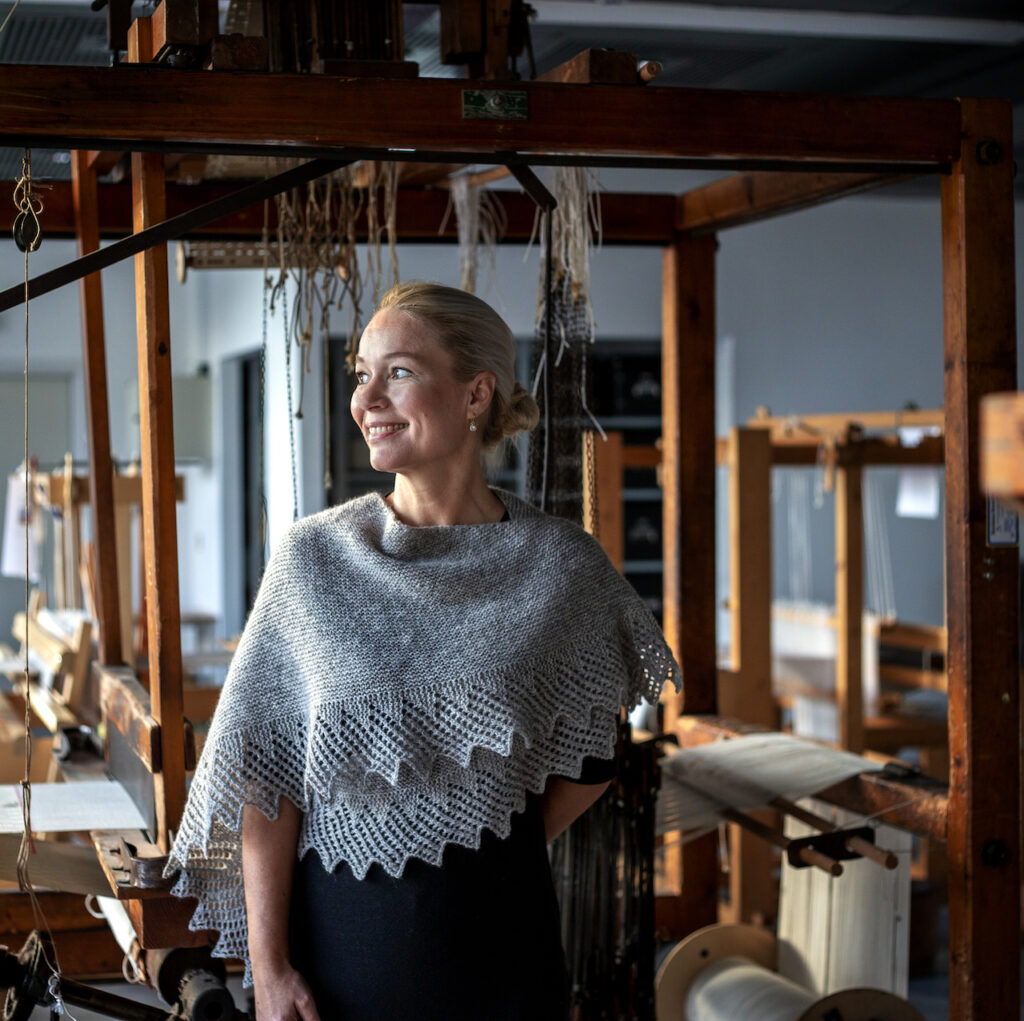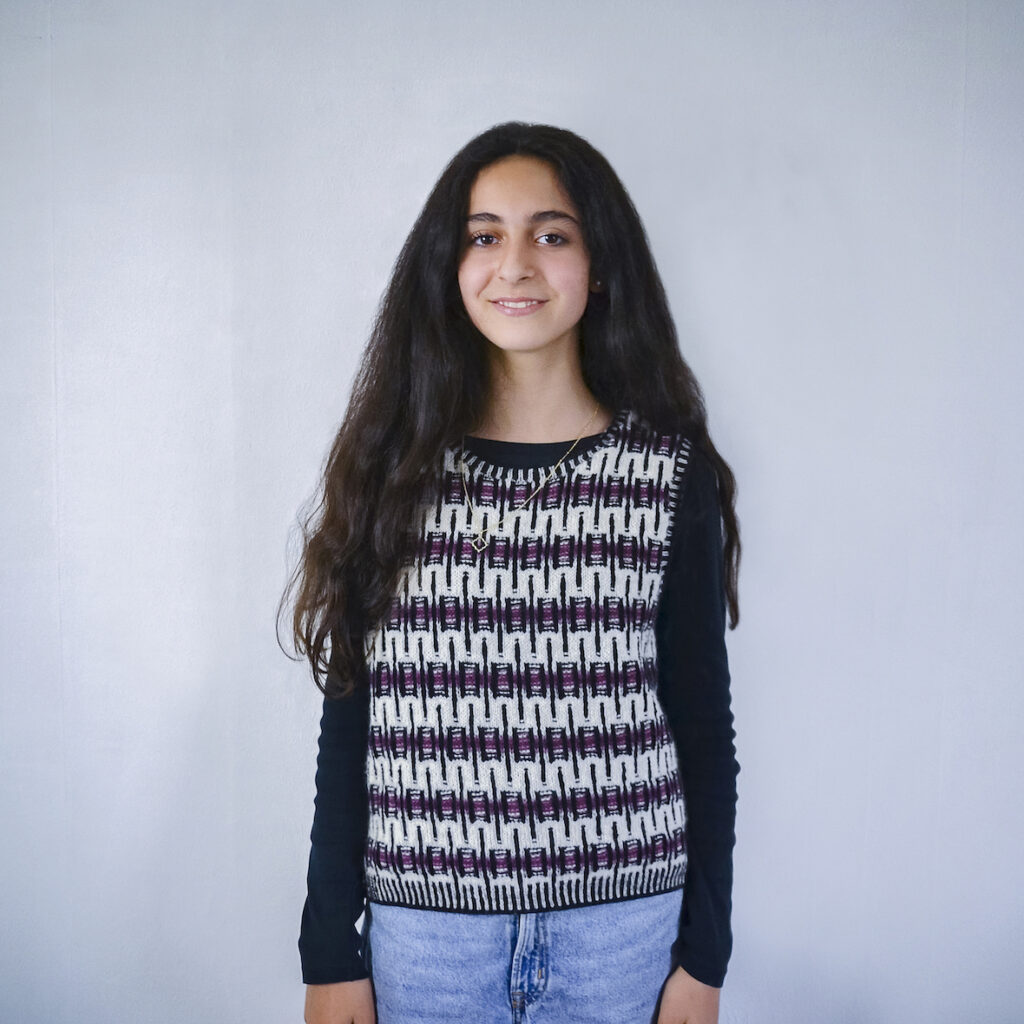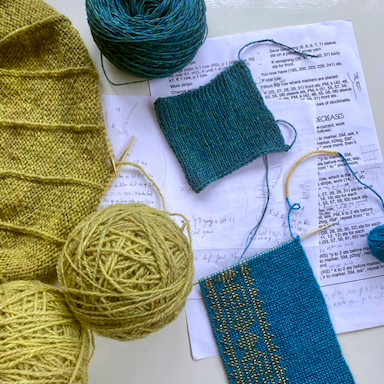
Short rows are the perfect technique for shaping knitting, and there are many different ways to knit short rows. Many of them are a bit fiddly, and some will even make a small hole in the knitted fabric where the turn is. My favorite technique is German short rows because they are easy to work and the result is a nice, almost invisible, turn.
Here, I’ll show how to work German short rows in stockinette. The project I’m working on is a striped version of my own Cook a wolf sweater pattern that I’m currently writing. I use short rows to shape the shoulder of this sweater, to give it a small slope that makes the sweater fit better.
After knitting on the right side
Here, I am showing what to do after finishing the knit stitches on the right side. Having reached the number of stitches the pattern states, turn the work so the wrong side is facing you.
Now, slip the first stitch as if to purl with the yarn in front of the work. Then, pull the yarn over the needle, pulling the two legs of the stitch long. After that, purl the stitches on the needle:
After purling on the wrong side
You basically do the same when you finish purling the required number of stitches on the wrong side. Turn the work so the right side is facing, slip the first stitch as if to purl with the yarn in front of the work, then pull the yarn over the needle, pulling the two legs of the stitch long. After that, knit the stitches on the needle:
In both cases, there is now a pulled-over stitch on the needle. This stitch looks doubled, but it is one stitch and should be worked as one.
Knit the pulled-over stitch on the right side
When you reach a pulled-over stitch on the right side, it looks like this. In this video, I knit two ordinary stitches, then the pulled over stitch, and then two ordinary stitches:
And similarly when you purl the pulled-over stitch on the wrong side. In this video, I purl two ordinary stitches, then the pulled-over stitch, then two ordinary stitches:
And this is what the shoulder looks like after being closed using a 3-needle bind off – you can just see that the stripes are narrower in one end, and that’s all it takes to improve the shaping of a sweater shoulder:


